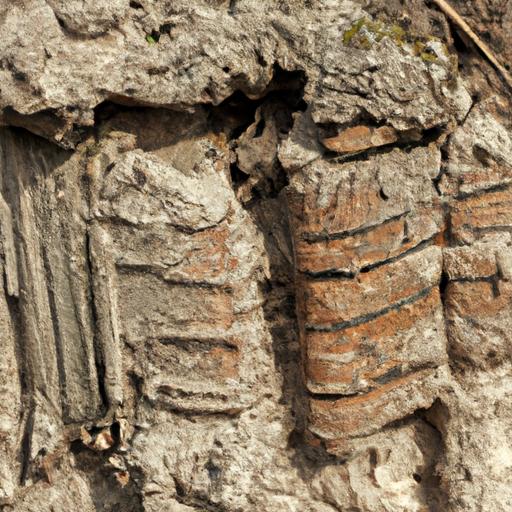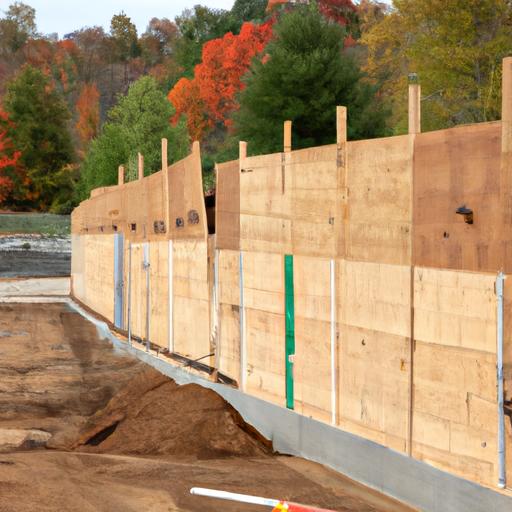As a homeowner or builder, you may have heard the term “stem wall” thrown around in the construction industry. But what exactly is a stem wall, and why is it so crucial to the success of your construction project? In this comprehensive guide, we’ll delve into the world of stem walls, exploring their history, definition, benefits, and construction. By the end of this article, you’ll have a better understanding of what a stem wall is and how it can benefit your building project.
Importance of Stem Walls in Construction

Stem walls are an essential component of any building project. Their primary purpose is to support the weight of a building’s foundation and provide a barrier against moisture and water damage. Stem walls are typically made of concrete or masonry and are constructed above the building’s footing. They are designed to transfer the weight of the building’s structure to the foundation, ensuring stability and strength.
Brief History of Stem Walls
The use of stem walls in construction dates back to ancient times. The ancient Egyptians and Greeks used stem walls in their construction projects, and they were prevalent in Roman architecture. In modern times, stem walls have become a standard practice in construction, used in both residential and commercial building projects.
Purpose of the Article
The purpose of this article is to provide a comprehensive guide to stem walls, covering their definition, benefits, and construction. By the end of this article, you’ll have a better understanding of what a stem wall is, how it works, and why it’s essential to the success of your construction project. Whether you’re a homeowner or builder, this guide will equip you with the knowledge you need to make informed decisions about your construction project.
Definition of a Stem Wall
If you’re new to the world of construction, you may be wondering what a stem wall is. Simply put, a stem wall is a vertical concrete or masonry wall that supports a building’s foundation. They are constructed above the footing and are typically between 6 and 24 inches in height.
Different Types of Stem Walls
There are several different types of stem walls, each with its unique characteristics and advantages.
T-Shaped Stem Wall
The T-shaped stem wall is the most common type of stem wall used in construction. It’s called a T-shaped stem wall because it resembles the letter T when viewed from above. This type of stem wall is typically used in areas with stable soil and moderate to low seismic activity.
Frost-Protected Stem Wall
A frost-protected stem wall is a type of stem wall that’s designed to prevent frost from penetrating the foundation. It’s typically used in areas with cold climates and high frost depths.
Slab-On-Grade Stem Wall
A slab-on-grade stem wall is a type of stem wall that’s used in areas with expansive soil conditions. It’s designed to prevent the soil from expanding and contracting, which can cause damage to the foundation.
Importance of Selecting the Right Type of Stem Wall for Your Construction Project
Selecting the right type of stem wall for your construction project is crucial to its success. The type of stem wall you choose will depend on several factors, including the soil conditions, climate, and seismic activity in your area. It’s essential to work with a qualified engineer or contractor who can help you select the right type of stem wall for your project. By selecting the right type of stem wall, you can ensure the stability and longevity of your building foundation.
Benefits of Using a Stem Wall
If you’re planning a construction project, you may be wondering why you should consider using a stem wall. Here are some of the benefits of using a stem wall in your construction project:
Increased Stability and Strength
Stem walls provide a stable and strong base for your building’s foundation. They are designed to transfer the weight of the building’s structure to the foundation, ensuring stability and strength. This added stability ensures that your building is not at risk of shifting or settling, which can lead to costly repairs down the line.
Protection Against Moisture and Water Damage
Stem walls provide a barrier against moisture and water damage. By elevating the building’s foundation above the ground, stem walls prevent water from seeping into the building’s foundation and causing damage. This protection is especially important in areas with high levels of precipitation or where flooding is a concern.
Improved Insulation
Stem walls can also improve the insulation of your building. By elevating the building’s foundation above the ground, stem walls create a gap between the building and the ground. This gap can be filled with insulation, which provides an additional layer of protection against temperature changes and helps to reduce energy costs.
In summary, stem walls provide increased stability and strength, protection against moisture and water damage, and improved insulation. By using a stem wall in your construction project, you can ensure that your building is strong, durable, and protected against the elements.
How to Build a Stem Wall
Building a stem wall requires careful planning and attention to detail. Here is a step-by-step guide on how to construct a stem wall for your building project.
Step-by-Step Guide to Constructing a Stem Wall
-
Site Preparation: Choose the location for your building project and ensure the site is properly leveled and graded. Excavate the site to the depth of the foundation.
-
Footing: Pour the footing of the foundation, which is the base layer of concrete that supports the stem wall.
-
Forms: Construct forms for the stem wall using wood or metal. Ensure the forms are level and plumb.
-
Reinforcement: Install steel reinforcement bars, also known as rebar, in the stem wall forms. The rebar provides additional strength and stability to the stem wall.
-
Pouring Concrete: Pour the concrete into the forms, ensuring that it is evenly distributed. Use a vibrator to remove any air pockets and ensure that the concrete is compact.
-
Curing: Allow the concrete to cure for at least 24 hours before removing the forms.
Necessary Equipment and Materials Required
Building a stem wall requires several pieces of equipment and materials, including:
- Concrete mixer
- Wheelbarrow
- Trowel
- Float
- Rebar cutter
- Formwork
The materials required include:
- Concrete
- Rebar
- Formwork
Common Mistakes to Avoid During Construction
Building a stem wall requires precision and attention to detail. Here are some common mistakes to avoid during construction:
- Incorrectly placing the rebar
- Uneven distribution of concrete in the forms
- Failure to properly level and plumb the forms
- Not allowing the concrete to cure for the recommended time
By following these steps and avoiding common mistakes, you can ensure that your stem wall is sturdy, stable, and provides the necessary support for your building project.
Maintenance and Repair of a Stem Wall
As with any other component of a building, stem walls require regular maintenance to ensure their longevity and functionality. In this section, we’ll explore how to maintain and repair a stem wall, including signs of damage to look out for and tips for preventing future damage.
How to Maintain a Stem Wall
Regular maintenance is key to the longevity of a stem wall. Here are some tips for keeping your stem wall in good condition:
Inspect the Stem Wall Regularly
Regular inspections are essential to identifying any potential issues with your stem wall. Inspect the stem wall for any cracks, bulges, or other signs of damage. Pay close attention to the joints between the stem wall and the foundation, as this is a common area for damage to occur.
Clean the Stem Wall
Over time, dirt, debris, and other materials can accumulate on the stem wall. This can lead to moisture buildup, which can cause the stem wall to deteriorate over time. Regularly cleaning the stem wall can help prevent this from happening.
How to Repair a Damaged Stem Wall
If you do identify damage to your stem wall, it’s essential to repair it as soon as possible. Here are some tips for repairing a damaged stem wall:
Identify the Cause of the Damage
Before you can repair the stem wall, you need to identify the cause of the damage. Common causes of stem wall damage include water damage, soil movement, and poor construction practices. Identifying the cause of the damage will help you determine the best course of action for repairing it.
Repair the Damage
The method for repairing the damage will depend on the type and severity of the damage. Small cracks can often be repaired with epoxy or other sealants, while larger cracks may require more extensive repairs. It’s important to consult with a professional before attempting any repairs to ensure that the repair is done correctly.
Tips for Preventing Damage to a Stem Wall
Prevention is always better than cure when it comes to maintaining a stem wall. Here are some tips for preventing damage to your stem wall:
Proper Drainage
Proper drainage is crucial to preventing damage to a stem wall. Ensure that the area around the stem wall is properly graded to prevent water from pooling around the foundation.
Regular Maintenance
Regular maintenance is key to preventing damage to a stem wall. Regularly inspecting and cleaning the stem wall can help identify any potential issues before they become more significant problems.
Proper Construction Practices
Proper construction practices are crucial to the longevity and functionality of a stem wall. Ensure that the stem wall is constructed correctly, using the right materials and techniques, to prevent damage from occurring in the first place.
Conclusion
In conclusion, stem walls are an essential component of any building project. Their primary purpose is to provide stability and support to the building’s foundation and protect against moisture and water damage. In this comprehensive guide, we have explored the definition of stem walls, their benefits, and their construction. By following these guidelines, you can ensure that your construction project has a strong and secure foundation that will stand the test of time.
Remember, choosing the right type of stem wall for your project is crucial to its success. Consider factors such as the type of soil, climate, and building materials when selecting a stem wall. If you’re unsure which type of stem wall is best for your project, consult with a professional builder or engineer.
At walltipss.com, we understand the importance of a strong foundation for any construction project. That’s why we’re committed to providing you with the latest tips and tricks to ensure your building project is a success. Whether you’re a homeowner or builder, we’re here to help you every step of the way.


